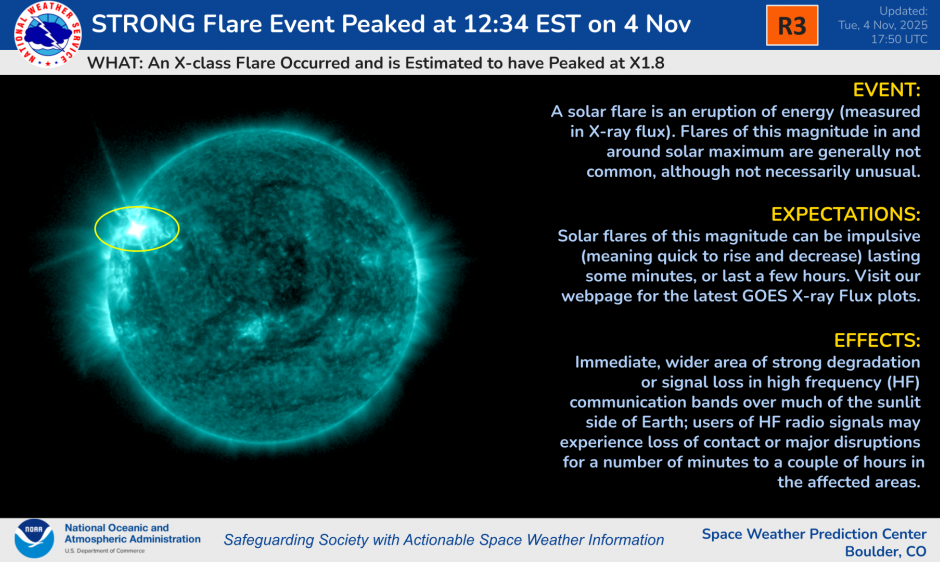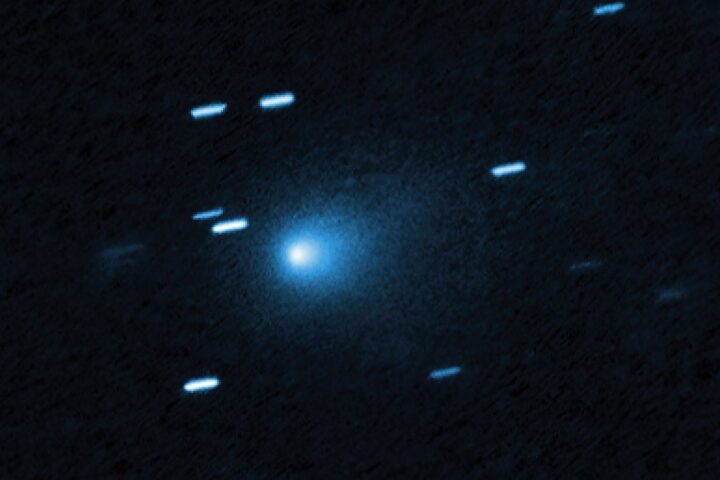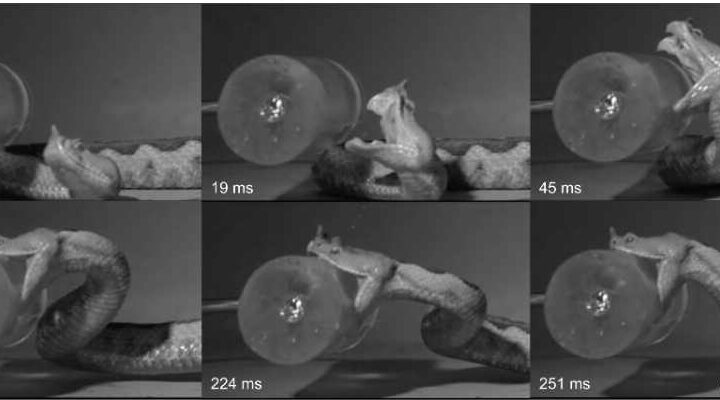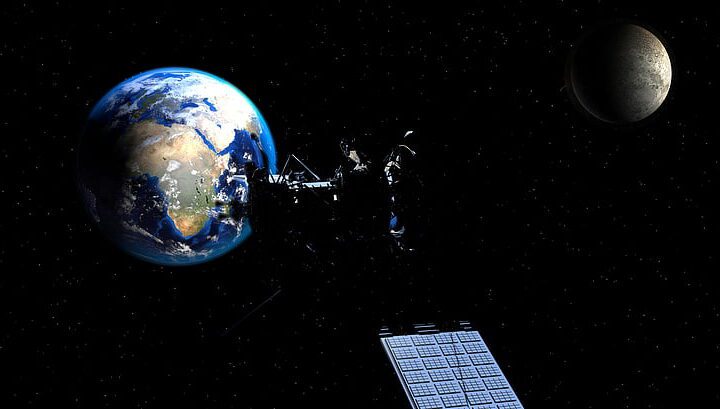
Solar Activity Dashboard: X-Class Flares Trigger G3 Storm Watch
Tracking the powerful solar eruptions of November 2025 and their potential impacts on Earth
Two powerful X-class solar flares erupted on November 4, 2025 — an X1.8 from active region 4274 and an X1.1 from a region just beyond the east limb. Both flares produced coronal mass ejections (CMEs) largely directed away from Earth. Active Region 4274 continues to develop, displaying a complex beta-gamma-delta magnetic field configuration associated with high flare potential. According to NOAA’s Space Weather Prediction Center, another strong M7.4 flare was observed at 11:19 UTC on November 5, further confirming this region’s ongoing activity.
The flares follow a pattern of increasing solar activity as Solar Cycle 25 approaches its peak, with these recent X-class events occurring exactly 22 years after the historic November 4, 2003 solar flare — one of the most powerful ever recorded, estimated at X28 or possibly as high as X40.

Space Weather Forecast
NOAA’s Space Weather Prediction Center has issued a G3 (Strong) Geomagnetic Storm Watch for November 6-7 as Earth experiences the combined effects of recent solar activity. G3 conditions were reached at 05:27 UTC on November 6. The ongoing activity is caused by a glancing blow from the recent CMEs combined with a high-speed stream from a coronal hole. Region 4274’s continued growth and complex magnetic configuration suggests more significant activity is possible in the days ahead.
Recent Solar Activity
Aurora Visibility Forecast
Timeline of Recent Events

Potential Impacts of G3 Storm
Communications
High-frequency (HF) radio may experience intermittent blackouts. Degradation likely on high-latitude HF radio paths. GPS/GNSS navigation systems may experience intermittent issues with accuracy for several hours. Satellite communications could experience brief disruptions.
Satellites
Surface charging on satellite components possible. Corrections may be needed for orientation problems. Increased drag on low-Earth orbit satellites, potentially affecting orbital trajectories and requiring adjustments. Satellite operators may need to take protective measures.
Power Grid
Voltage corrections may be required in power systems. Protective measures may trigger false alarms on some grid protection devices. Long transmission lines at higher latitudes are most susceptible. Power companies may implement grid stabilization procedures.
Aurora
Aurora likely visible as far south as Pennsylvania, Iowa, and Oregon in the US; throughout much of Canada; northern Europe including UK and Germany; and northern Asia. Clear, dark skies away from light pollution offer best viewing conditions. Photography enthusiasts should prepare for potential displays.

Solar Flare Classification System
Solar flares are classified according to their X-ray brightness. Each category represents a 10-fold increase in energy output over the previous class. The current X1.8 flare is nearly 10,000 times more powerful than a typical A-class flare. Understanding this classification system helps contextualize the intensity of solar events and their potential impacts.
| Class | X-ray Flux (W/m²) | Frequency | Typical Effects |
|---|---|---|---|
| X | ≥ 10-4 | Rare (several per month at solar maximum) | Major radiation storms, widespread radio blackouts, potential satellite damage |
| M | 10-5 to 10-4 | Moderate (several per week at solar maximum) | Brief radio blackouts affecting polar regions, minor radiation storms |
| C | 10-6 to 10-5 | Common (daily at solar maximum) | Few noticeable effects on Earth |
| B | 10-7 to 10-6 | Very common (constant background) | No effect on Earth |
| A | ≤ 10-7 | Constant background radiation | No effect on Earth |
Solar activity has significantly increased in early November 2025, with two X-class flares on November 4th and continued strong activity from Region 4274, which maintains a complex beta-gamma-delta magnetic configuration. A G3 (Strong) Geomagnetic Storm Watch is in effect for November 6-7, with conditions reaching G3 level at 05:27 UTC on November 6.
Enhanced aurora viewing opportunities are likely at middle latitudes, while various technological systems may experience temporary disruptions. NOAA’s Space Weather Prediction Center continues to monitor these developments, with an updated forecast showing a 70% chance of M-class flares and a 25% chance of additional X-class flares through November 8.
This dashboard will be updated as conditions evolve. For real-time alerts, consult the NOAA Space Weather Prediction Center or your local space weather information service.


















